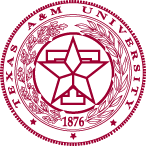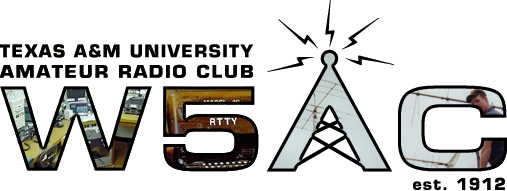



Search:
Callsign lookup:
APRS Locator:
(Type * after callsign for locations that might include a number suffix)
TAMMSSDA stands for Texas A&M Mobile Severe Storms Data Acquisition. They are sometimes referred to as the Aggie Stormchasers. Their website is located at http://www.met.tamu.edu/TAMSCAMS/TAMMSSDA/ and has information on joining their club, forecasting tornadoes, and other topics of Meteorology.
Unlike SKYWARN storm spotters, who remain in one area while reporting severe weather, TAMMSSDA teams go out and find severe weather. TAMMSSDA's area of operations is described as "the Southern Plains", which includes Texas and Oklahoma, and possibly New Mexico, Arkansas and even Kansas, if a TAMMSSDA team decides to drive that far from College Station.
While on a chase, TAMMSSDA teams need a way to talk to each other. Often, more than one car will "caravan" together to a location. Sometimes, there is more than one caravan. Teams can spread out far from each other, based on different weather forecasts. Different teams can even wind up in different states.
Meanwhile, one reason TAMMSSDA exists in the first place is to pass information on storms to the National Weather Service (NWS). Even with the most advanced Doppler radars in the world, the NWS still benefits from knowing when tornadoes have actually been spotted on the ground (instead of just "indicated" by their radars).
Communication between one team and another, between teams and "nowcasters" who have internet access, and even between a team and the NWS is essential for the chase to be successful, fun, and safe.
While it may be possible to use cellphones for both team communications and NWS communications, cellphones rely on towers. Some areas of the Southern Plains simply don't have cellphone towers; also, no matter where a chase team goes, the power may go out during the storm - and without power, a cellphone tower doesn't work. Even if power does not go down, if enough people make calls at the same time, it can overwhelm the cellphone system.
Therefore, TAMMSSDA teams communicate with ham radios.
When all else fails, hams can get their messages through:
In the past, hams have brought their own equipment on chases, simply because they were already familiar with their radios (and had frequencies saved in the radio's memory, extra features, etc.). Hams can choose to do this on future TAMMSSDA operations too, or just use TAMMSSDA's radios.
TAMMSSDA is currently equipped with three "chase kits" (for three different teams). Each kit includes a dual-band radio (2 meter and 70 cm) and a magnetic-mount dual-band antenna for the roof (among other things), since most SKYWARN activity takes place on either the 2 meter or 70 cm bands. The kits' antennas have a normal-for-mobile-radio PL-259 connection; if you want to use an HT with this antenna, bring adapters for PL-259.
Some TAMMSSDA members may drive vehicles that already have a ham radio installed; this expands the number of possible chase teams.
While TAMMSSDA has radios, it doesn't always have enough licensed ham radio operators for all the teams. TAMMSSDA invites members of the Texas A&M Amateur Radio Club (or "W5AC") to join them on stormchases, ideally equipping each car in a TAMMSSDA operation with at least one ham.
There are about 100 members of TAMMSSDA, but only 10 hams on the list below (including W5AC members). Murphy's Law suggests that there will be chase opportunities when some or all of those 10 people won't be able to attend, leaving many TAMMSSDA members with no communications. The more TAMMSSDA members who get their ham radio license, the more chase teams TAMMSSDA can operate, and the more likely that there will be room for you in the car!
Note: all "chasers," including W5AC members, must complete a TAMMSSDA safety class before they can chase with TAMMSSDA! This is mandatory both for liability reasons and to inform chasers of the potential hazards of this fun and exciting hobby. Safety classes are held at least a couple of times each semester, and can be held more frequently if there are enough people requesting an additional class.
| Known Safety-Certified Hams: Updated Spring 2004 | |
|---|---|
| TAMMSSDA members | W5AC members |
| Chris McKinney - KD5AKM Robert Osborn - KD5TKQ Jason Sippel - KD5NPJ Michael Baur - KD5NPF Kevin Walter - KG4MHD |
Brady Creel - KD5LAE Michael Baur - KD5NPF Chris Williamson - KD5SYI Lance Cotton - KJ5O Michael Mertes - KZ5M Kevin Glueck - N5TLT |
| Know the callsigns of the hams with
whom you're about to communicate. It's useful to know drivers' cellphone numbers too. | |
Ham operations for TAMMSSDA are basically like any other ham radio operation. Follow standard procedures, like waiting a moment between transmissions so that others can break in if they need to.
Though it has not been required in the past, it is feasable that TAMMSSDA could run a "net" between chase teams, with one person designated the "net controller", who guides the flow of voice traffic. This is a very good thing in tense, emergency conditions. Hopefully we will never have to use it that way.
If it is necessary to contact the NWS or other local authorities directly, follow the guidance of the Team Leader(s).
| Useful Frequencies (in MHz): | |
|---|---|
| 146.55, 146.46 | National storm spotting frequency, and backup |
| 146.52 | National Simplex Calling Frequency for the 2 meter amateur radio band |
| 146.40 - 146.58 | Simplex 2 meter frequencies |
| 147.42 - 147.57 | More simplex 2 meter frequencies |
| 162.40, 162.425, 162.45, 162.475, 162.50, 162.525, and 162.55 | NOAA Weather Radio frequencies |
| 446.0 | National Simplex Calling Frequency for the 70 cm band (FM) |
TAMMSSDA usually communicates using 146.55 MHz, as other chasers would. If that frequency becomes too crowded or otherwise unsuitable for TAMMSSDA purposes, coordinate amongst teams to switch (or "QSY") to another frequency.
For chasing/spotting within the vicinity of one town or city, it may be better to use a local repeater. As opposed to "simplex" operation (transmitting and receiving on the same frequency), repeaters boost the range of your "input" signal by transmitting it as their "output". They also allow communications with local storm spotting groups who use the repeaters. Frequencies for College Station-area repeaters can be found here - http://w5ac.tamu.edu/nearby.html
Simplex frequencies in the 2 meter band include frequencies between 146.40 and 146.58, as well as 147.42 to 147.57. The National Simplex Calling Frequency for 2 meters (for all hams, not just chasers) is 146.52 MHz, and is programmed as memory #32 in the TAMMSSDA radios. It may be helpful to store some of these frequencies in your own radio's memory (if you're using it instead of TAMMSSDA's radios), for QSY's during hectic moments.